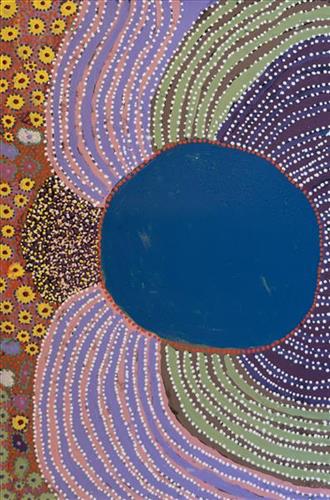111582386290
Kulyu / Mata (Bush Potato, Weir Vine)
Kulyu, or mata, is commonly known as the bush potato or weir vine. The climber grows up to six metres in height and is found with relative abundance in the central west region of Western Australia. The plant produces purplish, trumpet shaped flowers and large seed pods between January and June, but is most valued by Martu for its large, edible tubers. These tubers are cooked in hot sand or ashes before consumption.
During the pujiman (traditional, desert dwelling) period, Martu would traverse very large distances annually in small family groups, moving seasonally from water source to water source, and hunting and gathering bush tucker as they went. Whilst desert life has moved away from mobile hunter-gatherer subsistence throughout the course of the twentieth century, bush tucker continues to be a significant component of the modern Martu diet. Hunting and gathering bush tucker remain equally valuable as an important cultural practice that is passed on intergenerationally. Though hunting and gathering implements have been modernised, methods of harvesting, tracking and the use of fire burning to drive animals from their retreats are still commonly practiced today.




